Infectious diseases, commonly known as communicable diseases, are transmitted from infected to uninfected organisms, but we almost exclusively study humans. These are caused by organisms ranging from bacteria to viruses to protoctists and fungi.
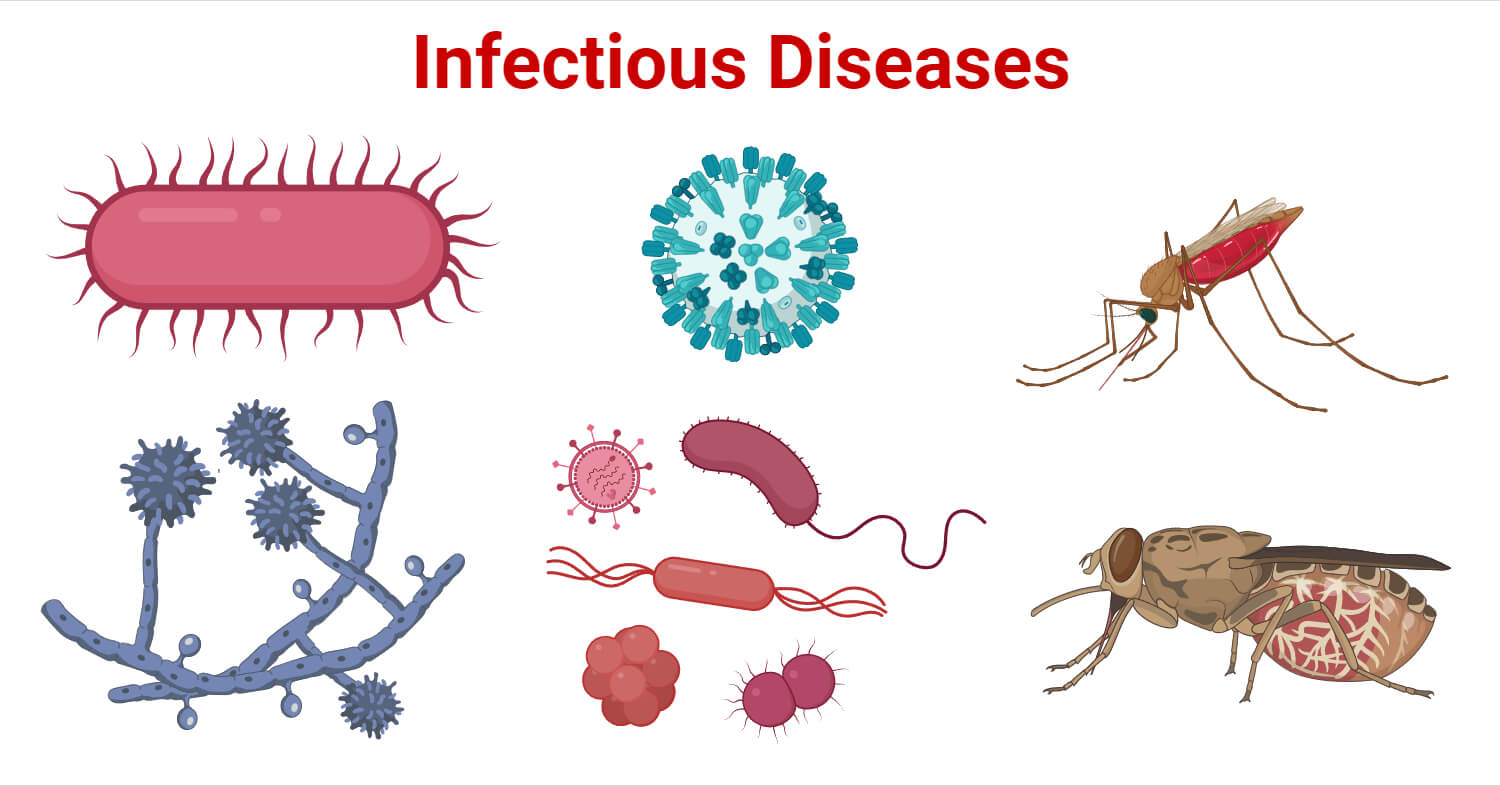
Any organism that is capable of causing a disease in the body is referred to as a pathogen. When these organisms or agents enter our body, they cause infection, manifesting in the form of infectious diseases. There are four major types of pathogens, and all of them are very intricately subdivided as well.
In this section we will only discuss about the major ones:
Interesting Science Videos
Bacterial Pathogens
Bacterial pathogens cause some infectious diseases. Bacteria are prokaryotic microorganisms in various forms, shapes, and sizes. There are many bacteria that are not pathogenic, i.e., they are incapable of causing diseases and coexist in the environment. Most of these non-pathogenic bacteria can be found within the human body as well, for instance, in the gut lining as well as the outer skin (normal flora).
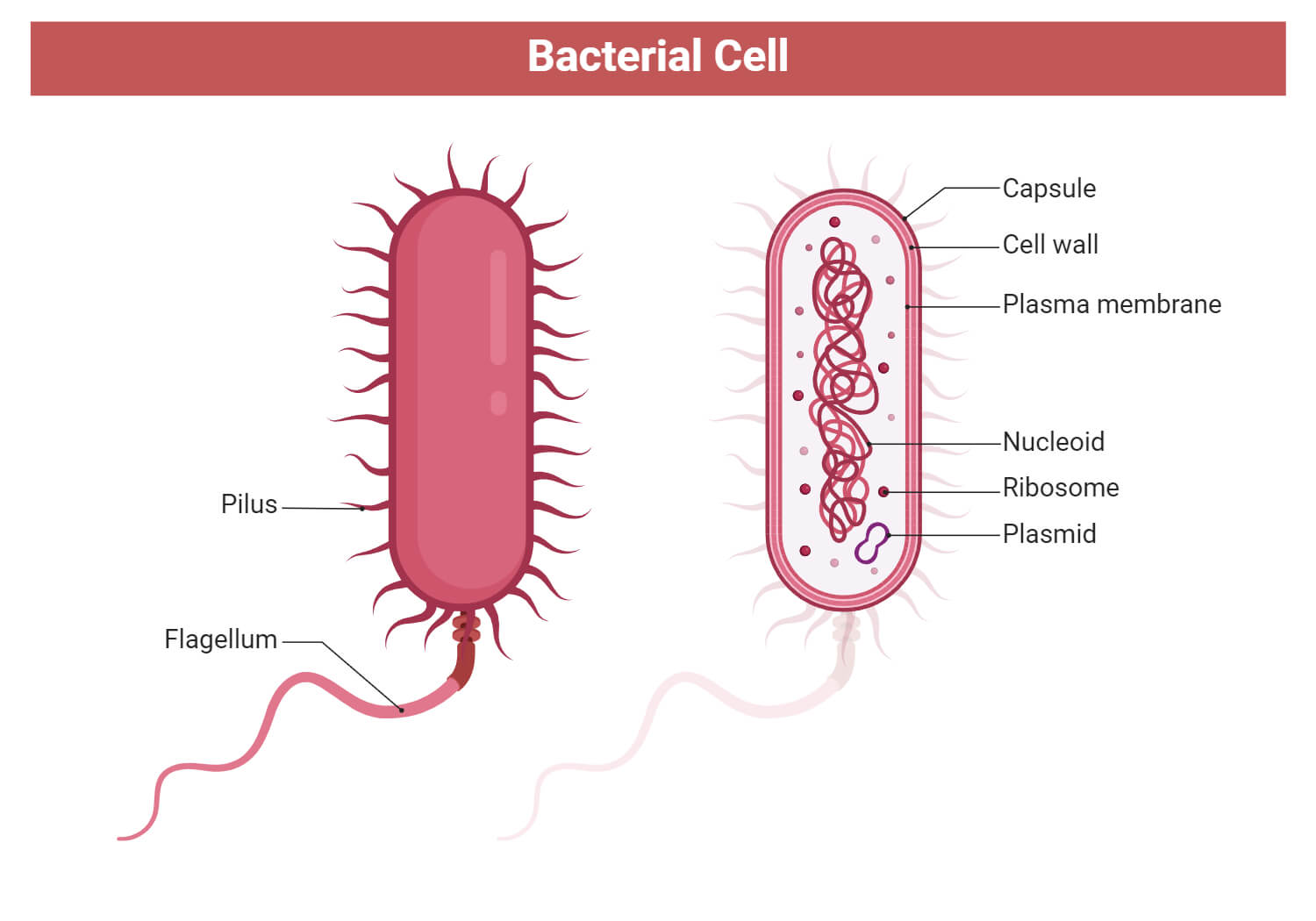
Other bacteria which are capable of causing infections are referred to as pathogenic bacteria. When these bacteria enter our body, they cause disease. Bacterial diseases are usually treated with antibiotics, which are highly effective but their overuse has led to many bacteria developing antibiotic resistance as well. This is one of the major problems being faced by the healthcare sector today.
Bacterial diseases include: TB, Meningitis, Cholera, Syphilis, etc.
Viral Pathogens
Some infectious diseases are also caused by viral pathogens. Viruses are regarded as a link between living and non-living organisms because they showcase various unusual features. They are usually only a genetic material (DNA or RNA) surrounded by a protein coat. Viruses are unable to survive outside a host cell, and most often depend on the host’s cellular machinery to carry out their functions because they lack cell organelles and other important proteins. Another unusual property of viruses is that they can exist in crystallized form without losing their viability or infectious nature. Once inside a host cell, viruses depict one of two life cycles:
- Lytic life cycle: Rapid replication and killing of host cell.
- Lysogenic life cycle: Integration into the host genetic material in order to remain dormant for a longer period of time.
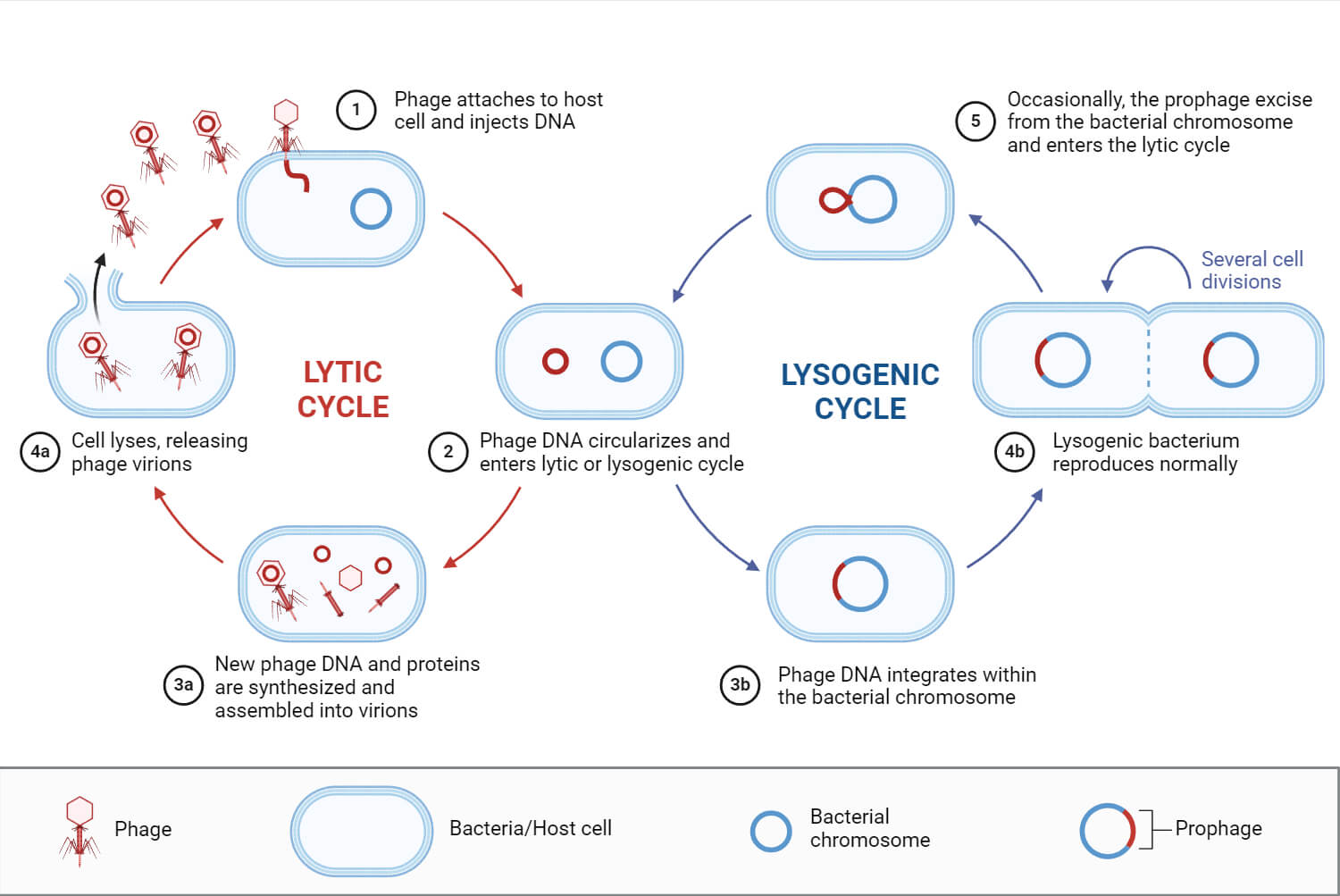
The characteristics and symptoms of viral diseases vary with the kind of life cycle the virus follows after infecting an individual. This is the reason why some viral infections immediately start showing their symptoms, while others remain undetected for years.
Viral diseases include: HIV/AIDS, Viral hepatitis, Influenza, COVID-19, etc.
Protoctist Pathogens
Some infectious diseases are also caused by protist pathogens. Protists are mostly single celled eukaryotic microorganisms that may or may not be parasitic in nature. Animal-like protists, also known as protozoa, are the ones that are responsible for causing a range of diseases in humans and animals. These protists are parasitic meaning that they leech their host for nutrients and survival.
Protozoal diseases include: Malaria, Sleeping sickness, Dysentery, etc.
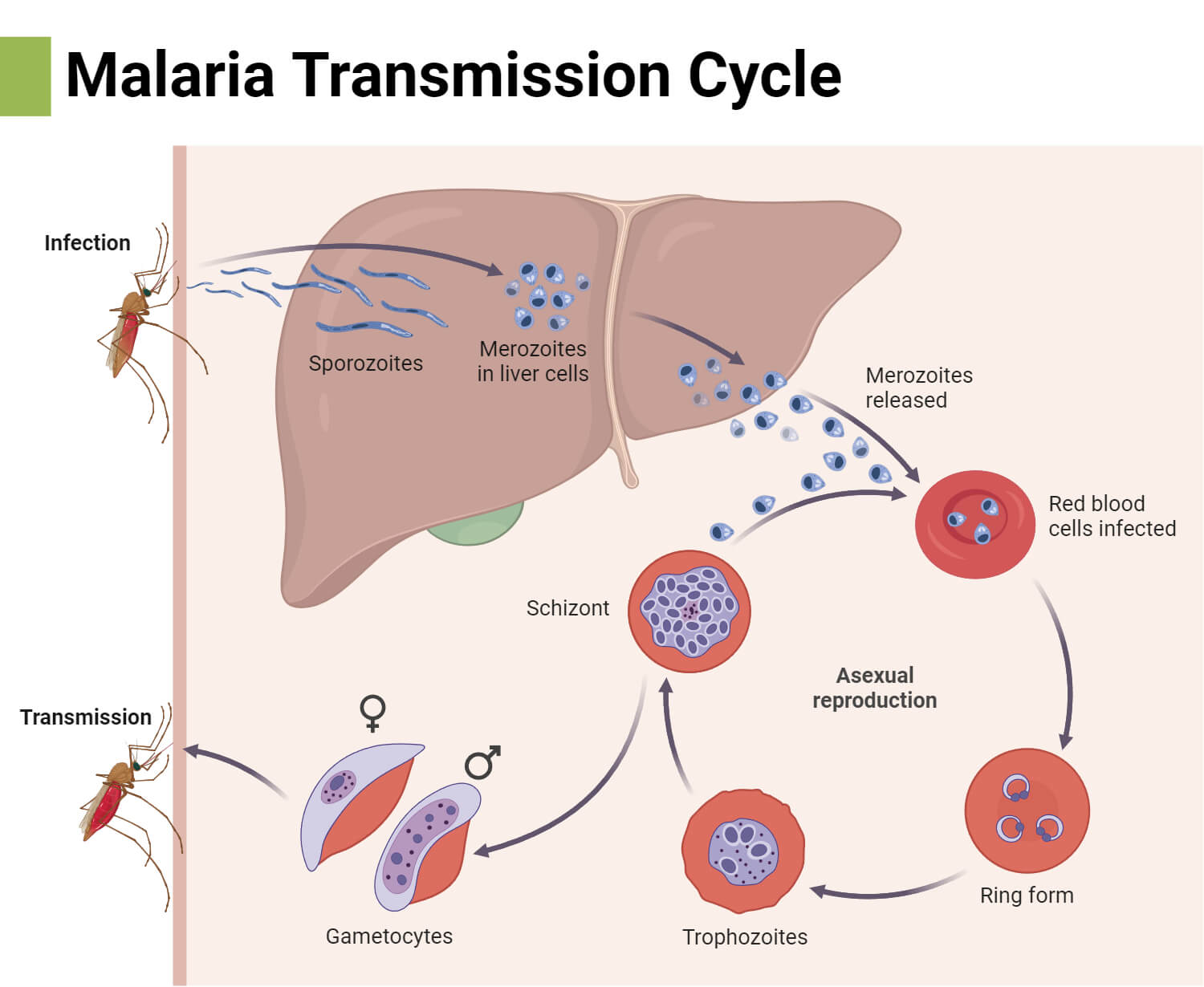
Fungal Pathogens
Some diseases are caused by fungi as well. Humans can get sick from fungi in three ways: fungal poisoning, fungal parasites and fungal allergies. Out of these, fungal parasites are responsible for causing fungal infectious diseases. Fungal infections are usually considered mild, and their treatment is pretty straightforward. However, these infections can prove severe in case a patient is immunosuppressed or immunodeficient, which indicates that fungal pathogens are good opportunistic pathogens.
| Disease | Causative Agent | Type of pathogen |
| Cholera | Vibrio cholerae | Bacteria |
| Malaria | Four species: – Plasmodium falciparum – Plasmodium malariae – Plasmodium ovale – Plasmodium vivax | Protoctist |
| HIV/AIDS | Human immunodeficiency virus (HIV) | Virus |
| TB | – Mycobacterium tuberculosis – Mycobacterium bovis | Bacteria |
Disease Transmission
The spread of a pathogen from an infected individual to a healthy individual, either via direct contact or indirectly through water or air borne media is called disease transmission.
1. Direct transmission
Some pathogens are not capable of surviving outside the host independently, and are only transmitted through direct physical contact between infected individuals and healthy individuals. This includes contact in the form of bodily fluids or blood. Examples of direct transmission are:
- Contact through lesions: Occurs when open wounds come in contact to each other, causing microorganisms from one infected site to transmit to the other infected site. This is usually risky because pathogens gain direct entry into the bloodstream.
- Sexual intercourse: Common route of transmission for diseases that are spread through body fluids like semen and blood. Diseases that spread through sexual intercourse are exclusively labeled as STDs (Sexually Transmitted Diseases).
- Transfusion: Occurs in individuals who share intravenous needles for various purposes, commonly for the administering of drugs. It is also very risky due to the direct exposure into the bloodstream.
- Oral secretions and droplet spread: Usually occurs when infected people sneeze, cough or speak, during which pathogens can exit the body through oral discharge like saliva and mucus. These pathogens spread as tiny droplets in the air, however only within a small distance and for a shorter period of time.
Diseases such as: HIV/AIDS
2. Indirect Transmission
However, there are those pathogens that can survive in external environments like water, air, food, fecal matter and even in vectors. These pathogens usually transmit indirectly. Here there is no need for direct human to human contact. For example,
- Air-borne transmission
Pathogens spread through long distances and can remain suspended in the air for a longer time. For example: Measles virus remains suspended in the air even after the infected individual has left the place.
- Food and Water borne transmission
Pathogens are transmitted via contaminated food and water resources or supply systems. When food is undercooked or is not prepared by following proper sanitary guidelines, it may contain virulent pathogens. For example: canned food may be a perfect environment for the growth of Clostridium botulinum.
- Vector-borne transmission
Vectors are organisms that function as carriers of pathogens. They are usually infected by the pathogen, and transmit it to other organisms, usually through direct contact. The most common example of a vector is the blood-sucking mosquito.
A major mode of indirect transmission is via vectors such as mosquitoes, flies, ticks, etc. who carry the pathogen and inoculate the pathogen into a healthy individual. For example: Malaria gets transmitted when a female Anopheles mosquito infected with strains of Plasmodium feeds on human blood. During the feeding process, the exchange of mosquito saliva into the human bloodstream introduces the pathogenic Plasmodium into the human body.
- Through Contaminated objects
Objects such as doorknobs, utensils etc that are contaminated with pathogens help to transmit the disease to individuals if they touch their eyes, mouth or nose before washing their hands thoroughly. This also applies to clothes and towels used by infected individuals. Thus, proper sanitation and hygiene are required to avoid these kinds of transmission.
Examples of Infectious Diseases
Acute Diseases
Those diseases that affect individuals for short periods of time and develop suddenly. Including but not limited to Influenza, Measles, etc.
- Influenza
Commonly known as flu, it is a contagious respiratory infection caused by influenza virus. Infections take place in lower and upper respiratory tracks. Although it is not severely harmful, it causes seasonal epidemics and are threats to high-risk patients.
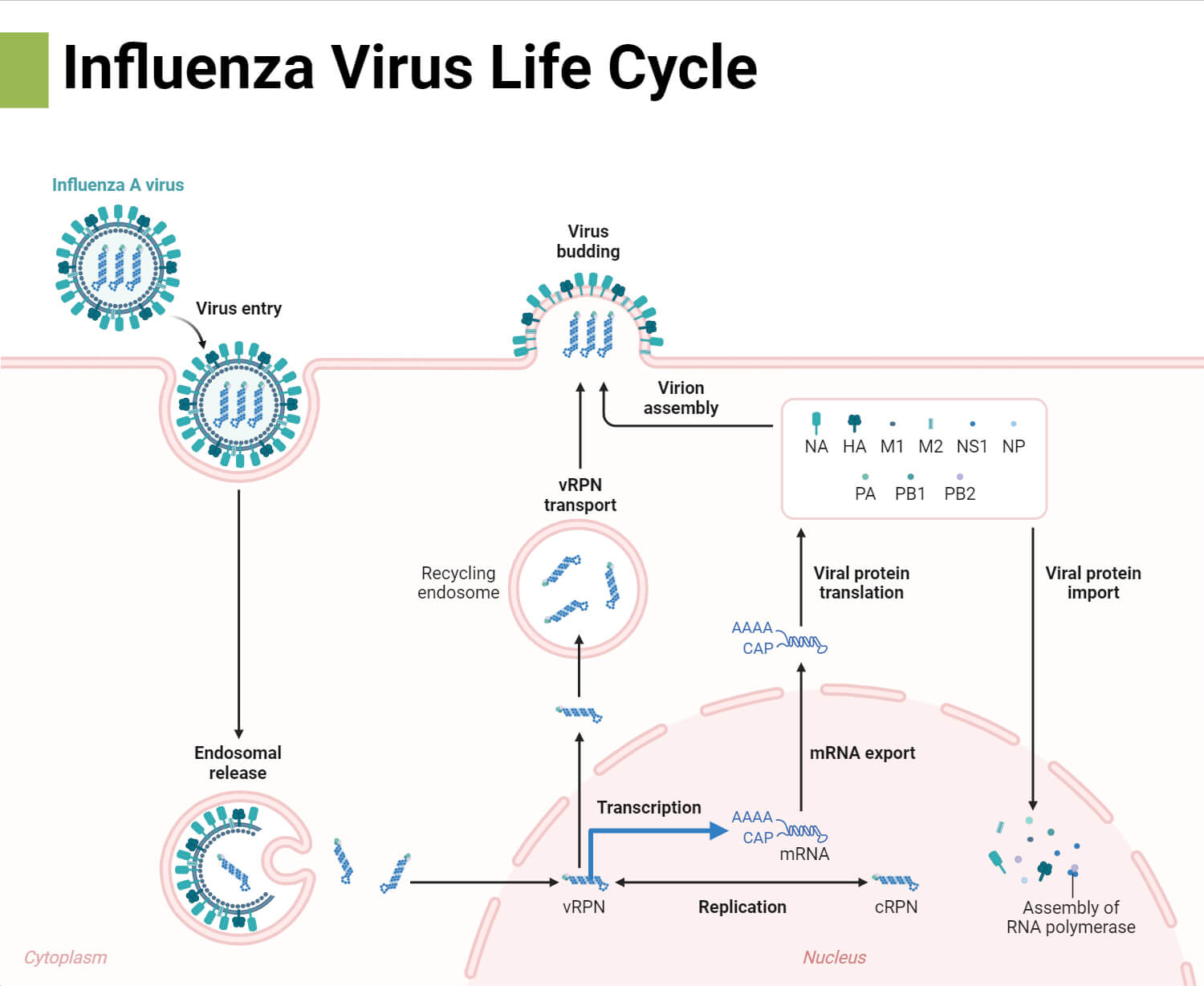
| Spread By | – Direct person-to-person contact – Droplet spread – Contact with virally contaminated objects |
| Incubation period | 1-4 days, 2 days on average |
| Signs and Symptoms | Headache, Fever, Cough, Sore throat, Chills |
| Complications | Pneumonia |
- Measles
Measles is an acute viral respiratory infectious disease that is caused by members of the Morbillivirus genus that affects humans because they are the only natural host.
| Spread By | – Air-borne particles (remain infectious for up to 2 hours after infected person leaves the surrounding) – Direct person-to-person contact – Droplet spread |
| Incubation period | 1-4 days, 2 days on average |
| Signs and Symptoms | – High Fever (up to 105°F) – Cough – Conjunctivitis – Koplik Spots – Maculopapular rashes Infected individuals are contagious four days before the rash appears, and for four days after. Incidentally, the rash doesn’t appear on immunocompromised people. |
| Complications | – Bronchopneumonia – Laryngotracheobronchitis – Diarrhea |
- Common Cold
Usually the common cold and flu are considered the same. This may be because they are both contagious respiratory infections but they are caused by different viruses. Flu is caused by influenza virus only but common cold is caused by various different groups of viruses such as rhinovirus, seasonal corona viruses, etc. Common cold is a milder version of flu which tends to get better within 10 days.
| Spread By | – Direct person-to-person contact – Droplet spread – Contact with virally contaminated objects |
| Incubation period | 1-4 days, 2 days on average |
| Signs and Symptoms | Nasal Congestion, Headache, Sneeze, Coughs, Sore Throat, Body ache |
| Complications | Shortness of breath |
Chronic Diseases
Those that affect individuals for longer periods of time(more than 6 months), usually terminal and develop slowly. As the time passes by the diseases may worsen. Including but not limited to HIV/AIDS, Tuberculosis, Meningitis etc.
- HIV/AIDS
It is an infection caused by Human Immunodeficiency virus(HIV). HIV is an infection and AIDS is a syndrome that is caused by that infection. HIV attacks the immune system by destroying the immune cells, especially CD4 cells. The virus usually remains dormant for a long period of time ( lysogenic cycle) and thus is an ongoing or chronic infection which when untreated leads to AIDS. As it weakens the immune system, many opportunistic pathogens attack the body and may lead to death.
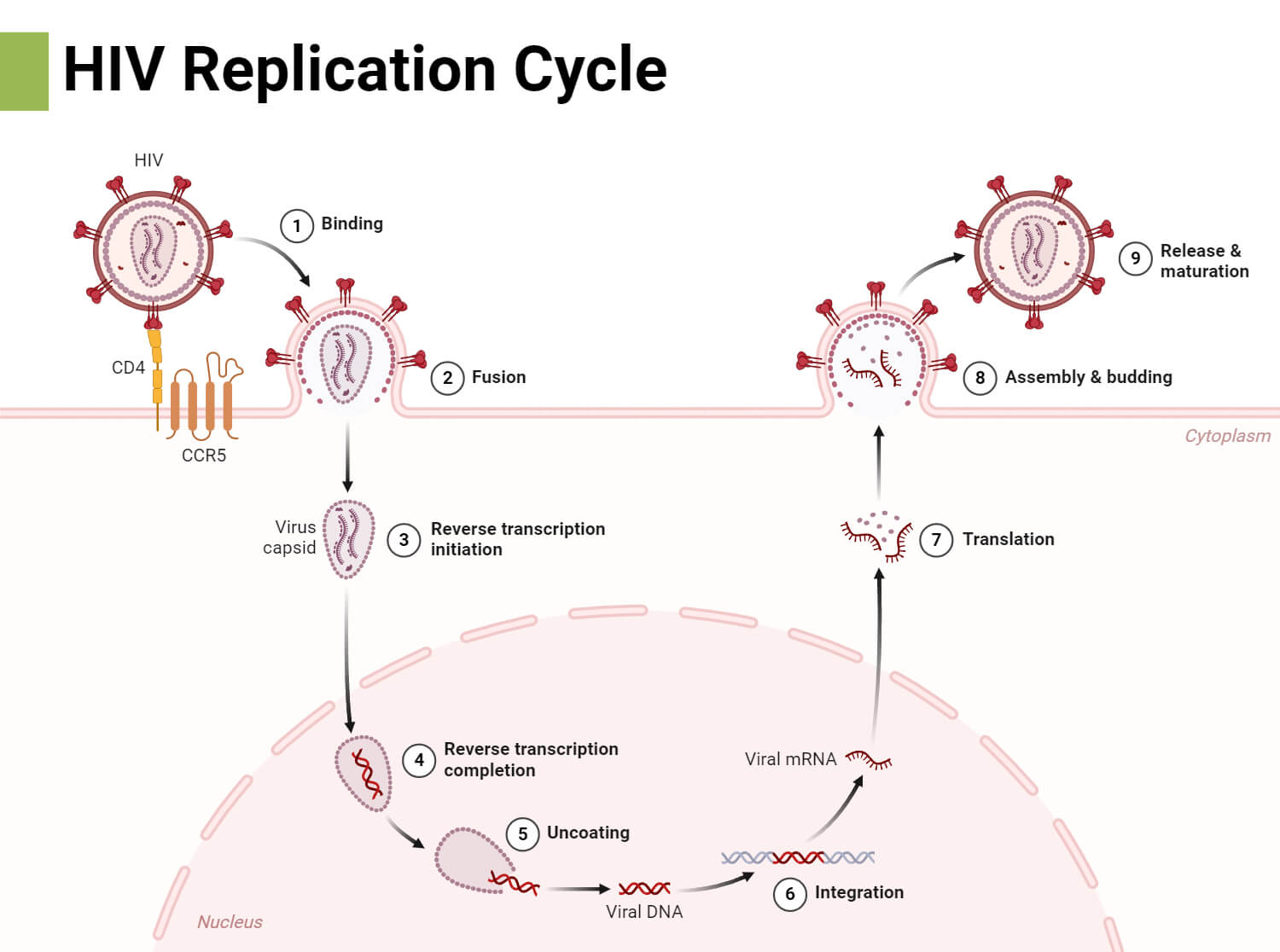
| Spread By | – Direct contact with blood and other bodily fluids, e.g. during unprotected sexual intercourse or breastfeeding by HIV infected mother to child. |
| Incubation period | – Primary infection (acute HIV): 2-4 weeks – Clinical latent infection (chronic HIV): may take years and progresses to AIDS in about 8-10 years if not treated |
| Signs and Symptoms | Primary infection – Flu-Like illness – Diarrhea – Night sweats – Weight loss Clinical latent infection – Swollen lymph glands – FatigueThrush (Oral Yeast Infection) – Pneumonia – Weight loss |
| Complications | Numerous opportunistic pathogen infections and diseases on top of HIV infection. Worsening situation leads to AIDS (Acquired Immunodeficiency Syndrome). |
- Meningitis
Meningitis is an infectious disease, where the tissue/ membrane (known as meninges) that surrounds the brain and spinal cord gets inflamed. It can be caused by various species of bacteria, viruses and fungi. Most common meningitis is caused by a virus, followed by bacteria and then by fungi. Usually, viral meningitis is mild and often improves without treatment but on the other hand bacterial meningitis is very serious and should be treated within a few days with appropriate antibiotics. If it is not treated on time, it may lead to permanent brain damage leading to death.
| Spread By | – Direct oral contact – Contact with pathogen-contaminated objects |
| Incubation period | Few hours to a few days |
| Signs and Symptoms | Stiff neck, seizures, Flu-like symptoms, Sudden high fever, Loss of appetite, sleepiness, Confusion or trouble in concentrating, Light sensitivity |
| Complications | – Permanent brain damage – Hearing loss – Learning disabilities – Death |
- Tuberculosis (TB)
Also known as TB, it is caused by bacteria called Mycobacterium tuberculosis or Mycobacterium bovis. TB is a severe illness that affects lungs since the bacteria replicate and survive in the lungs.
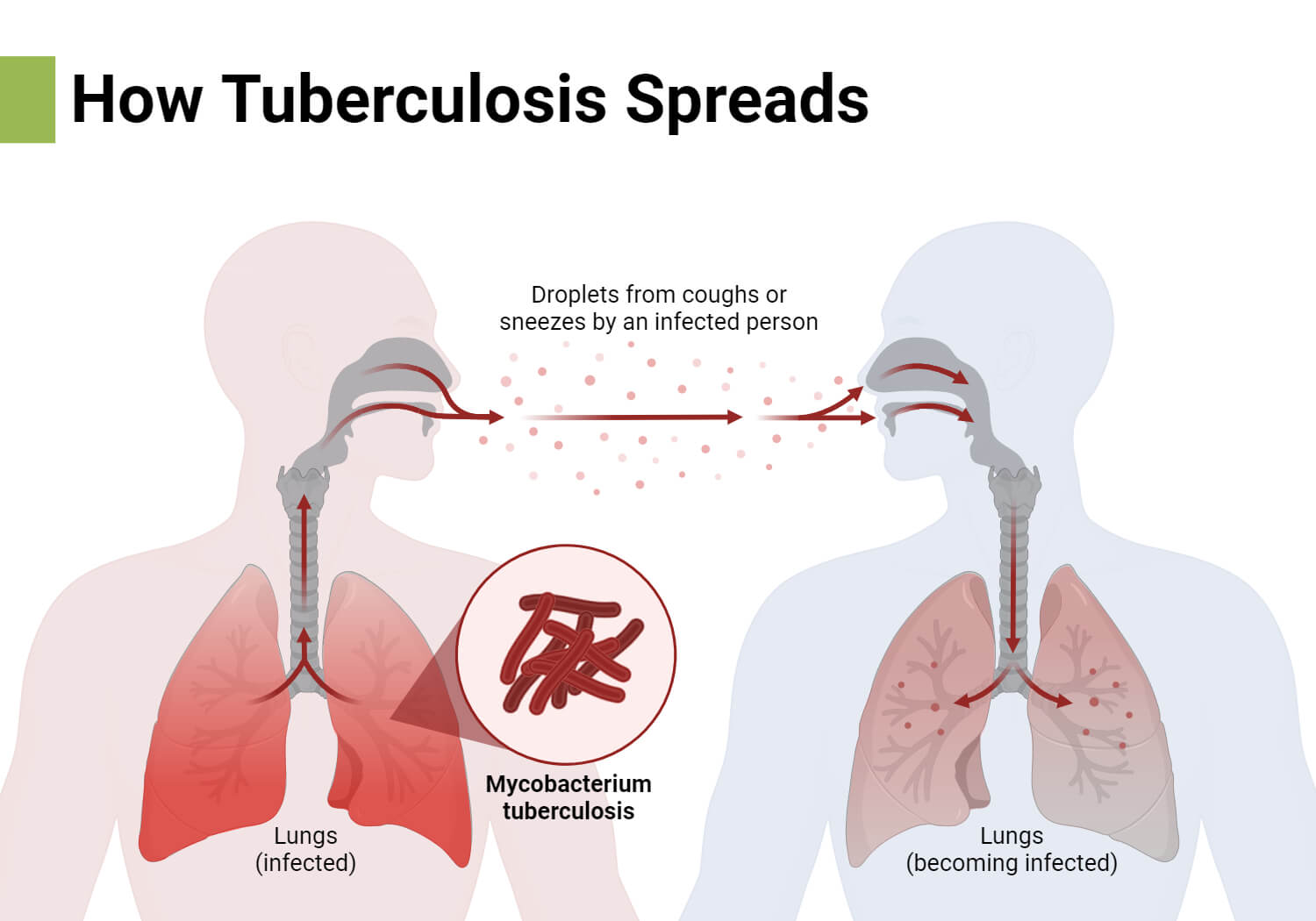
There are three forms of TB:
Primary infection: It is the first stage where the immune cells fight against the bacteria and destroy them. But some bacteria survive and start to replicate.
Latent infection: Although the immune system could not destroy the bacterias, it remains alert and keeps them under control by building a wall around the infected lung tissues. Thus, there are no symptoms.
Active disease: This is the stage after which the immune system cannot control the infection anymore. Thus, the infection spreads to other parts of our body.
| Spread By | Droplet spread |
| Incubation period | Active disease is usually seen after 3-4 months of latent period |
| Signs and Symptoms | Primary Infection Flu-like symptoms or no symptoms at all Active disease Coughing of blood and mucus, Chest pain, Night sweats, Loss of appetite, Chills, Painful breathing |
| Complications | – Respiratory failure – Permanent lung damage – Septic shock |
Transmission Cycle
When an individual is infected by a pathogen and develops a disease, they show some symptoms and can transmit the pathogen to other individuals. But sometimes individuals are capable of spreading pathogens without showing express symptoms of the associated disease. These individuals are called disease carriers, or carriers in short.
The passage by which a pathogen repeatedly passes from one host to another is called its transmission cycle. To control the spread of disease, the transmission cycle should be broken. This is only possible by determining the cause of disease and its method of transmission. One of the most effective methods of breaking the transmission cycle of diseases is through vaccination.
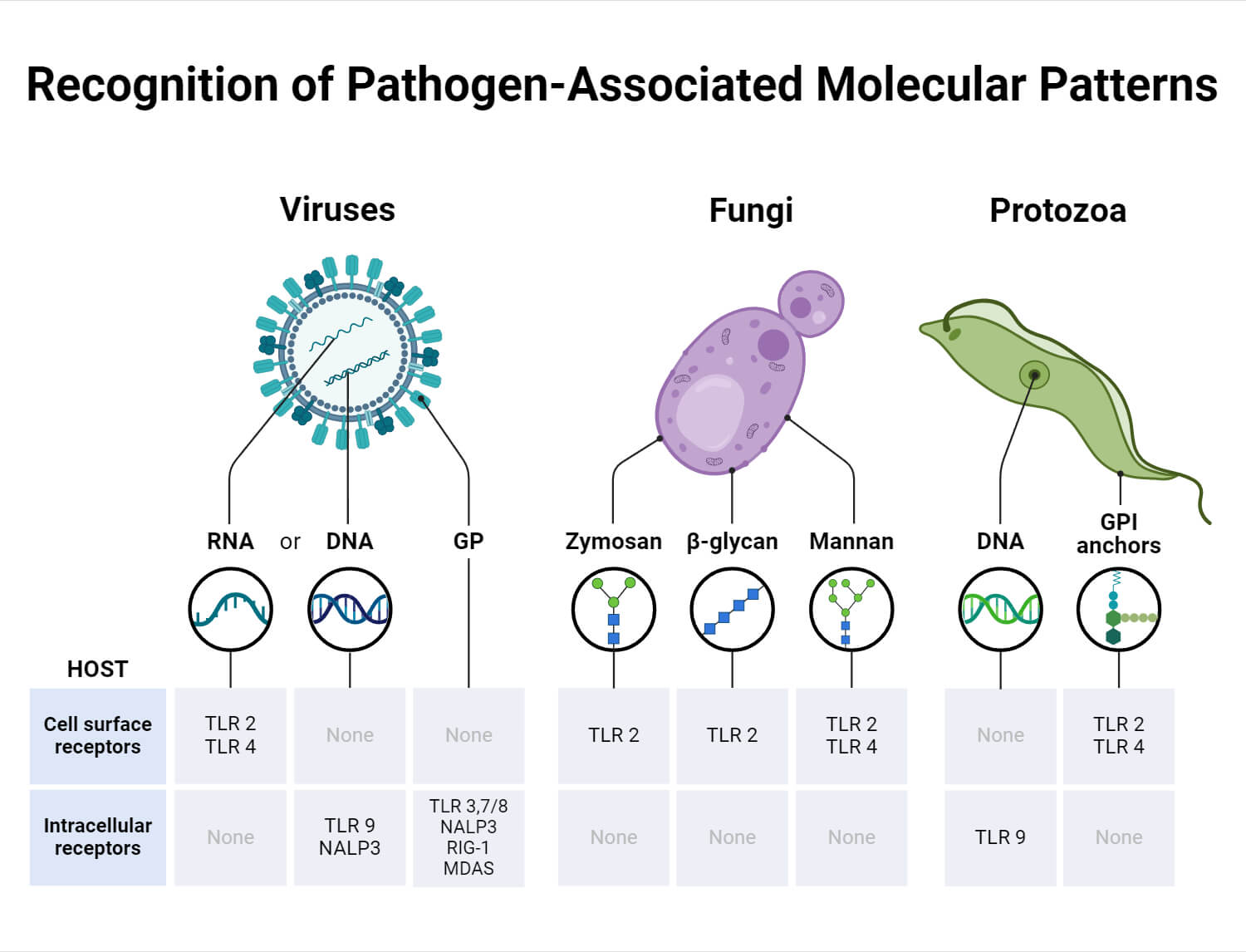
Vaccination
Vaccination helps prevent the spread of infectious disease by immunizing a given population prior to pathogen exposure and infection. Vaccine design and production is a tedious process and often takes a lot of time and monetary investment. This is the reason why vaccines have only been developed for a relatively small amount of diseases and infections.
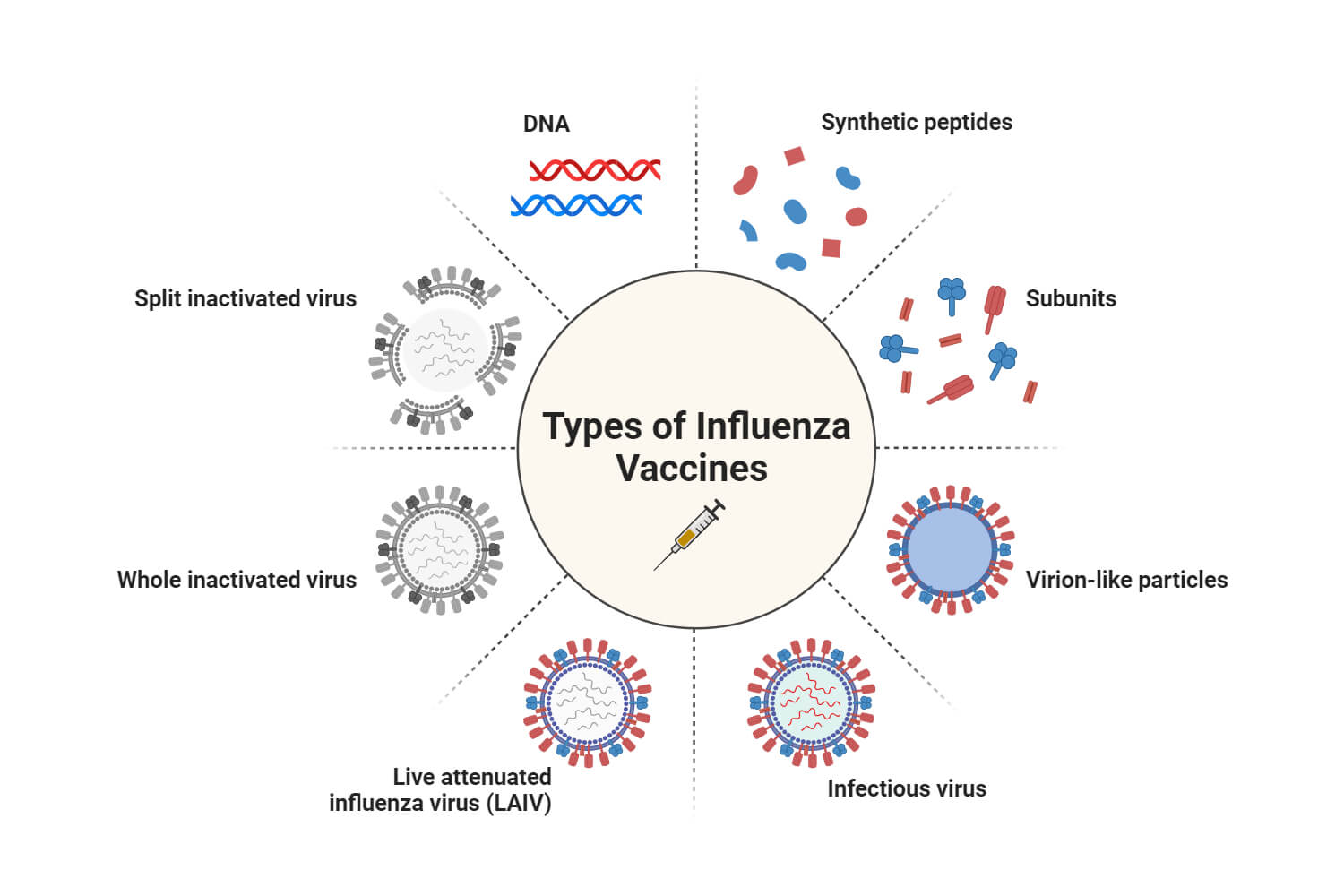
Occurrence of Diseases
Infectious diseases have always had a massive impact on human survival and quality of life, and a lot of research, effort, time and money goes into the study of these impacts and their possible solutions. WHO also reports that two infectious diseases have been completely eradicated as of now, Smallpox and Rinderpest. Rinderpest is a severe disease that affects livestock.
There are various terms that are used to describe the occurrence of disease. They are:
The term Epidemic is used to refer to a sudden surge in the number of diseased individuals in a particular region. Example: Ebola epidemic in Africa.
The term Pandemic is used when there is an increase in the number of diseased individuals throughout a continent or all over the world. Example: Covid-19 pandemic.
Endemic diseases are those that always remain in a population. Example: TB is an endemic disease for the entire population of the world, whereas Malaria is endemic for tropical and subtropical regions.
Incidence of disease is the number of individuals that are diagnosed over a particular period of time (usually weeks, months, years).
Prevalence of disease is the number of individuals who have developed a particular disease at any given time.
Mortality rate is the number of deaths caused by a disease over a particular period of time which is usually a year.
Note: Incidence, Prevalence and Mortality rates are usually expressed as a proportion of the total population, following a standardized notation that can be relevant during comparison between various groups. For example, A particular disease may have an incidence of 1 in 10,000 individuals.
Solved Questions on Infectious Diseases
Note: Key words/phrases/sentences are underlined.
Paper 2 Variant 2, 2023 (Feb/Mar)
Tuberculosis (TB) and polio are examples of infectious diseases.
i. Explain what is meant by an infectious disease. [2]
Infectious diseases are those diseases that are caused by pathogens such as bacteria, virus and, protoctis and can transmit from an infected person to uninfected individuals.
ii. Name a species of organism that causes TB. [1]
Mycobacterium tuberculosis / Mycobacterium bovis
Polio is a serious viral disease affecting young children. In 1996, polio caused paralysis in more than 75,000 children across Africa. A long-term vaccination programme allowed the WHO to declare that Africa was largely free of polio in 2020.
i. Explain how vaccination programmes can help to control the spread of infections diseases, such as polio. [3]
Vaccination programmes help to control the spread of diseases such as polio because it helps to break the transmission cycle. It aims to vaccinate the large number of the population thus helps in developing immune response against the particular disease. Vaccination against polio provides long term immunity.
(part of Q no. 5 from Exam style questions from Cambridge International AS and A level BIology coursebook)
The table shows statistics published in 2017 for four regions of the world and the global totals for HIV/AIDS in 2016 (data from UNAIDS)

With the reference to the table:
i. Calculate the case fatality rate for Haiti in 2016. [1]
(447/41421)*100 = 1.08
ii. Suggest why the case fatality rate varies between countries. [3]
Case fatality is much higher in countries like Nigeria and Somalia i.e. 4.17 and 3.51 respectively. This may be due to the remote location of the places affected by cholera so that emergency response and supplies cannot reach at a favorable time. Also countries having low fatality rate like Yemen, Haiti, etc may have provision of safe drinking water and better response in case of emergencies.
iii. Explain why it is important that the WHO collects data in outbreaks of cholera. [3]
WHO collects data on cholera outbreaks because the data helps to predict and prepare for any unwanted situation that may arise in a particular place so that the response to an outbreak is very quick. Data shows that cholera is likely to spread after a disaster. The response should be fast because cholera spreads as well as kills rapidly. It is easy to avoid deaths due to cholera by a simple process of rehydration.
(part of Q no. 8 from Exam style questions from Cambridge International AS and A level BIology coursebook)
The graph shows the number of new cases of TB between 1990 and 2012 in five countries in the Commonwealth of Independence States (CIS).

i. Explain why the number of new cases is shown as per ‘100000’. [2]
As the total number of population of each country is different, by proportioning the number of new cases we can make a valid comparison between the countries.
ii. Describe the trends shown in the graph. [3]
Overall, the number of new cases of TB in all the countries have increased from 1990. Between 2000 and 2005 the number of new cases reached a peak in most of the countries but Belarus the maximum number of cases i.e 85 cases per 100000 reached before 2000 and remained somewhat constant after a slight decrease. Highest number of cases (175 per 100000) was achieved by Moldova around 2005 whereas Armenia had significantly less number of new cases.
Note: We should justify the trend of graphs using data and particular year in this context.
References
- Boshoff, H. I., Warner, D. F., & Gold, B. (2023). Editorial: Drug-resistant mycobacterium tuberculosis. Frontiers in Cellular and Infection Microbiology, 13. https://doi.org/10.3389/fcimb.2023.1215294
- Centers for Disease Control and Prevention. (2020, November 5). For healthcare professionals – diagnosing and treating measles. Centers for Disease Control and Prevention. https://www.cdc.gov/measles/hcp/index.html#complications
- Higuera, V. (2022, September 23). Disease transmission: Direct contact vs. Indirect Contact. Healthline. https://www.healthline.com/health/disease-transmission#indirect-contact
- Influenza – infectious diseases – MSD manual professional edition. MSDManual. (n.d.). https://www.msdmanuals.com/professional/infectious-diseases/respiratory-viruses/influenza
- Jones, Mary, Jones, Geoff. (2020). Cambridge IGCSE Biology Coursebook with CD-ROM (5th Edition). Cambridge, UK: Cambridge University Press.
- Mayo Foundation for Medical Education and Research. (2024, February 9). HIV/AIDS. Mayo Clinic. https://www.mayoclinic.org/diseases-conditions/hiv-aids/symptoms-causes/syc-20373524
- Professional, C. C. medical. (n.d.). Fungal infection (mycosis): Types, causes & treatments. Cleveland Clinic. https://my.clevelandclinic.org/health/diseases/24401-fungal-infections-mycosis
- Rauf, D., Upham, B., Sullivan, K., Connor, E., & Welch, A. (n.d.). What is the difference between cold and flu? symptoms, causes, diagnosis, treatment, and prevention. EverydayHealth.com. https://www.everydayhealth.com/flu/guide/
- Santos-Longhurst, A. (2019, April 3). What is a pathogen? 4 types and how they spread disease. Healthline. https://www.healthline.com/health/what-is-a-pathogen
- Savi, M. K. (2022). An overview of malaria transmission mechanisms, control, and modeling. Medical Sciences, 11(1), 3. https://doi.org/10.3390/medsci11010003
- Simon, V., Ho, D. D., & Abdool Karim, Q. (2006). HIV/AIDS epidemiology, pathogenesis, prevention, and treatment. The Lancet, 368(9534), 489–504. https://doi.org/10.1016/s0140-6736(06)69157-5
- StoryMD. (n.d.). Acute and chronic infectious diseases. StoryMD.com. https://storymd.com/journal/bmp8krkf6j-infectious-diseases/page/2p859d1a9p9-acute-and-chronic-infectious-diseases

Very good teaching notes…how can I get them for my students?